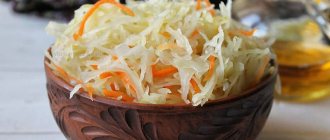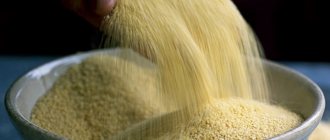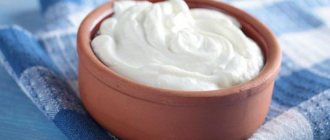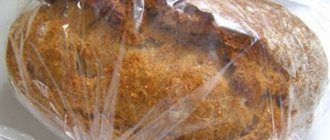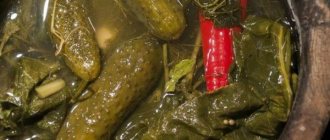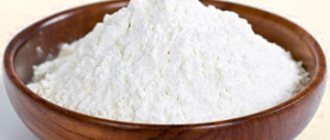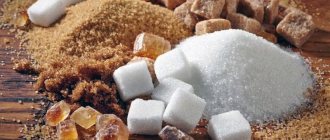Free legal consultation by phone:
8
Sparkling wine has long been an integral part of most holidays. Many people buy it in advance, as a result it is stored at home indefinitely. This raises the question of how long it can sit like this before being consumed. Some believe that this product does not have an expiration date or that it is long enough that you can store the bottle at home for a long time. However, in practice this is not the case.
How to store it correctly
To significantly increase the shelf life of champagne in the bottle, as well as to ensure that its exclusive tasting characteristics are preserved, you must pay attention to a number of factors that can significantly affect the quality of the finished product.
These nuances include: . Temperature indicators Never leave champagne at room temperature or higher for long periods of time. At such indicators, carbon dioxide begins to corrode the structure of the drink cork, which subsequently leads to the fact that the closure element begins to let air through. The optimal temperature is considered to be from 5 to 15 degrees.
Humidity. Alcohol should also not be stored in dry rooms. The average humidity should be 75%. This factor must be taken into account to ensure that the product’s cork does not dry out and lose its strength characteristics.
Tare position. Do not store a bottle of champagne in an upright position. Such drinks are placed only horizontally. The reason for this is the care for the wooden cork, which dries out more slowly if it touches liquid during storage.
The ideal place to store alcohol is a specially equipped cellar with stands. Experienced sommeliers do not recommend purchasing champagne from the shelves of supermarkets, stalls and other retail outlets, since sparkling wine is stored incorrectly in such places, and therefore its quality can be questionable.
- Temperature indicators. Never leave champagne at room temperature or higher for long periods of time. At such indicators, carbon dioxide begins to corrode the structure of the drink cork, which subsequently leads to the fact that the closure element begins to let air through. The optimal temperature is considered to be from 5 to 15 degrees.
- Humidity. Alcohol should also not be stored in dry rooms. The average humidity should be 75%. This factor must be taken into account to ensure that the product’s cork does not dry out and lose its strength characteristics.
- Tare position. Do not store a bottle of champagne in an upright position. Such drinks are placed only horizontally. The reason for this is the care for the wooden cork, which dries out more slowly if it touches liquid during storage.
- The ideal place to store alcohol is a specially equipped cellar with stands. Experienced sommeliers do not recommend purchasing champagne from the shelves of supermarkets, stalls and other retail outlets, since sparkling wine is stored incorrectly in such places, and therefore its quality can be questionable.
Did you know? Before pouring champagne into glasses, rub the glasses thoroughly with a cotton towel. This is necessary to ensure that carbon dioxide bubbles do not accumulate around uneven surfaces due to lint and foreign elements on the walls of the glass.
"Soviet"
The average price per bottle is about 150 rubles. It is worth noting that it is “Soviet” champagne that is in great demand during the New Year holidays. And all because of the low price and good quality of the product.
It is stored in the same way as “Lev Golitsyn” at temperatures up to +20 degrees. In this case, the humidity in the room should not exceed 85%. The information on the packaging contains nutritional value, composition, storage conditions, as well as a warning about the dangers of alcohol in large quantities.
How to store champagne at home
Champagne can be kept at home, maintaining the storage temperature within +5...+15 degrees.
If the drink warms to room temperature, the carbon dioxide in the bottle will begin to erode and corrode the cork material.
Even if traces of corrosion are invisible from the outside, air will slowly begin to seep inside and saturate the wine with oxygen. The taste of the product changes sharply and gradually becomes more bitter.
Storage temperatures below +5 degrees also have a bad effect on the product. In a cold environment, gases will begin to push the cork out of the neck, which can create trouble when trying to open the bottle or cause an involuntary discharge.
Important! Under no circumstances should champagne be exposed to direct sunlight. After just 20 minutes spent on the windowsill on a sunny day, sparkling wine can be safely thrown away
It is better to put the bottle in a place where light does not penetrate at all: minibar, refrigerator, closet.
Lack of moisture causes the cork to dry out. This also causes the taste of champagne to deteriorate. At home, it is impossible to create a humidity suitable for storing the product.
To prevent the cork from drying out longer, place the wine on its side and store it horizontally. This way the inner surface of the cork will be constantly moistened.
If this advice is not followed, the plug may crumble due to time and dryness. Particles of cork will end up in the bottle, which will not add to the pleasure of drinking champagne.
Features of storing a closed bottle
Sparkling wine requires special storage conditions. It should lie horizontally on shelves, while being in a damp, dark and cool room.
Champagne requires special storage conditions
The optimal humidity for product storage starts from 75%. Temperature conditions within +10…+12 degrees are suitable. The room needs good ventilation, access to excess light should be limited.
It is best to store champagne in rooms on the basement level. Prolonged storage of sparkling wine in the sales areas of supermarkets and regular liquor establishments is very harmful to the product.
Improper storage conditions greatly reduce the shelf life of the product.
After purchasing a product in a brightly lit trade pavilion or store, it is advisable to consume it within the next month. Such unsuitable storage conditions have a bad effect on the taste of champagne.
Good storage conditions for sparkling wines can only be provided by specialized elite stores if they are located in basements or cellars.
However, such retail outlets in close proximity to home cannot be found in every locality.
Features of storing an open bottle
If the bottle is opened, some of the carbon dioxide escapes, and oxygen enters the vessel. In this case, the wine cannot be stored for longer than 2 days.
In this case, the neck should remain tightly sealed. You cannot store champagne with the neck of the bottle uncovered. The wine will dry out in a matter of minutes.
Shelf life of "Russian champagne"
The manufacturer indicates 1 year as the shelf life of its product when stored in a refrigerator. At room temperature, the maximum shelf life is reduced to 3 months.
All this time the bottle must be tightly closed. The stale drink is only suitable for use as an acidic liquid for marinating meat.
Shelf life of "Soviet champagne"
In fact, “Soviet champagne” can be stored for up to 1 year. In this case, the bottle must be closed at all times. However, the shelf life indicated on the bottle is only 6 months.
The fact is that manufacturers often reduce the recommended shelf life of a product in order to insure the product and the consumer against possible unpleasant consequences. Poor storage conditions for sparkling wines are a universally accepted state of affairs, so producers develop expiration dates with this in mind.
Expiration dates of imported drinks
In fact, “Soviet champagne” can be stored for up to 1 year
Real champagne, that is, sparkling wine produced in the Champagne region, can be stored much longer than its counterparts. The same applies to cava, the Spanish version of champagne from Catalonia and Valencia.
Expensive and high-quality sparkling wines have a shelf life of 10 to 25 years. This time range is relevant if strict storage conditions for products are observed.
The site is not intended for viewing by persons under 18 years of age!
Champagne is an alcohol that has become a symbol of celebration, joy, and love. It is an invariable attribute of weddings and anniversaries, corporate events and romantic dates. They love it, but don't buy it often.
And those who go to the store to buy champagne invariably want to buy only the best, the most delicious and the freshest. But how to do that?
Most often, on bottle labels we find an inscription that very clearly stipulates the deadline for the sale (or shelf life) of this product. Most often for champagne it is one year. However, it is worth understanding what “expiration date” is.
This term means the time during which a particular food product (drink) retains all its beneficial and taste properties and is suitable for consumption.
When this period expires, food (drinks) are not recommended to be consumed, because they may not only be tasty, but also spoiled. This means harm to health, from mild digestive disorders to serious poisoning. That is, after the date indicated by the manufacturer next to the words “best before”, any product or drink is prohibited from being consumed internally.
But is it only this fateful date on a bottle of champagne that determines its deadline? And can champagne, suitable for consumption today, become poison tomorrow?
The answer to both of these questions is negative. Let's look at them in order.
Firstly, in addition to the indicated shelf life of the drink (like any other product), you must first take into account the conditions in which it was stored. And this is the temperature and humidity of the air, the availability of the drink to direct sunlight (remember the inscription: “do not buy from the window”?) and a combination of other small points. If the necessary storage (or transportation) conditions are not met, the champagne will become “expired” much earlier than the expiration date indicated on its label.
That is why it is recommended to choose the freshest drink possible, without taking into account the fact that there is still a lot of time before the end of its sell-by date. After all, you don’t know under what conditions it was stored in the warehouse, whether it was exposed to too high or too low temperatures, or exposure to direct sunlight.
Secondly, the expiration date does not expire in one day. Therefore, if the champagne was transported and stored correctly, then it may be quite suitable for consumption even some time after the date indicated as the deadline for sale. You just need to know that it is from this fateful date that its properties begin to change.
Champagne loses its taste and aroma. But even after drinking such a drink you will not get poisoned. You may simply not get the pleasure you expected.
So, we have come to the conclusion that the shelf life of champagne and sparkling wines (and other drinks and products) directly depends on their storage conditions.
So, it’s time to clarify the question of how to store champagne.
According to sanitary standards and other regulations, champagne must be stored indoors without access to sunlight at an air temperature of 5-15°C and a relative humidity of at least 75%. The room must have natural and artificial (not forced) ventilation, and be regularly cleaned, disinfested and deratized. Special racks must be provided to place bottles in a horizontal position.
In such conditions, champagne can be stored for up to three years. But how can manufacturers not protect themselves by looking at how bottles of sparkling drink are stored on store shelves? That’s why it says on the label that this alcohol is good for 12 months.
Only in elite, specialized stores do they take care to comply with all storage conditions for alcoholic beverages. In ordinary ones, everything is the same: unequipped shelves for storing champagne are located right in the trading floors, full of light and warmth.
The taste of such champagne rapidly deteriorates, especially in the summer, when unstoppable sun rays fall on the display cases with bottles.
So take note of all these requirements if you decide to purchase champagne in advance or with some reserve. Under normal circumstances, it is better not to buy strategic supplies of champagne for more than a month. Otherwise, both you and your guests will be very disappointed, having tasted a bitter and stale drink instead of a sparkling, sophisticated drink in a glass.
Its closure also plays a certain role in the shelf life of champagne. A drink sealed with a cork stopper can be stored for up to two years without any problems, while a plastic stopper reduces this period to one year.
The situation is completely different with an open bottle of champagne. You can only store it for one day if you close it with a special stopper and put it in the refrigerator. If the champagne has run out of steam, it’s better to just pour it out.
Not a single special event takes place without champagne.
Champagne is a noble drink made from sparkling bubbles that brings joy and happiness. This alcoholic drink is very popular, especially during the New Year celebrations. But, like other food products, champagne has a shelf life that cannot be ignored.
The shelf life of champagne indicates not only the period of time when the product should be consumed, but also when it meets the specified taste parameters. Compared to other alcoholic drinks, such as wine, vodka or cognac, the shelf life of champagne has its own peculiarity due to the high carbon dioxide content in it. Therefore, it should not be stored for long.
It is worth noting that you can only find out about the shelf life of champagne by looking at the bottle. But you can trust this date only if the bottle was stored correctly, namely at the right temperature and a certain percentage of humidity.
How and at what temperature should champagne bottles be stored? First of all, the temperature in the room with champagne should be about 11 degrees Celsius, and the humidity should not be less than 70%. If the temperature indicators are not observed, the cork may either become deformed, which will lead to depressurization of the bottle, or fly out when moving the champagne to a warmer room.
An important factor is the position of this drink on the shelf. The bottle should be in a dark room, in a horizontal position. Exposure to direct sunlight is contraindicated, as this will spoil the champagne and subsequently have a bitter taste.
Subject to the above factors, champagne can be stored for about 3 years, which only guarantees storage in production.
As a rule, there are bottles on the shelves in the supermarket and a lot of light falls on them. In this case, the shelf life is reduced from 3 years to 1 year. And after removing the cork from the bottle, store it for no more than a day.
An important role in determining the shelf life of champagne is played by its cork.
If the cork is plastic, this means not only that the shelf life of such a bottle of champagne will be shorter, but also that the champagne is not of very good quality. But such a drink will also be inexpensive. Manufacturers of quality drinks do not skimp on material and use corks made from natural fibers, which allow the champagne to breathe.
It is worth noting that, like all food products, each type of champagne may have its own storage conditions. Let's look at a few of the most popular champagne producers.
What is the shelf life of champagne in a bottle?
Therefore, different dates are indicated on the labels.
For example, the shelf life of Soviet champagne is unlimited, and the shelf life is 1 year for brut and 2 years for semi-sweet.
The label of semi-sweet sparkling wine of the Abrau-Durso, Rossiyskoe, Ariant, Delasi brands only indicates the expiration date: it is not limited, subject to the conditions of storage and transportation. Semi-sweet champagne Madame Pompadour and Moscow are guaranteed to be stored for 2 years.
It’s hard to imagine a major celebration without this sparkling drink.
Weddings, anniversaries, New Year - the cork pops, champagne is poured into glasses. And it is customary to drink an unopened bottle of champagne from a wedding exactly one year later - on the anniversary of the significant date. The natural question becomes: how long can champagne be stored from the moment it is made?
Manufacturers put a standard date on bottles - 12 months.
In fact, sparkling wine can be stored for up to three years if it is sealed.
For a longer period, the cork may dry out and the drink will be oxidized, and, accordingly, unfit for consumption. Keeping it at home for more than three years is not recommended. The shelf life increases only for expensive and high-quality brands of the drink, such as Crystal and Dom Perignon.
These drinks can be stored for up to 10 years without changing their properties over time. Of course, if what you get is not a fake.
This applies exclusively to good drinks that have been stored in the right conditions before sale. In retail chains, appropriate conditions for the drink are not provided.
It is best to drink a bottle purchased in a supermarket within a month from the date of purchase.
“Russian” champagne can be stored for up to 3 months at room temperature, and also for up to one year in the refrigerator. The bottle must be corked, otherwise the drink will no longer be sparkling.
But in the resulting wine vinegar it will be possible to marinate meat: it will no longer be suitable for anything else, either in taste or in its properties.
According to GOST, the shelf life of the well-known “Soviet” champagne is 6 months. In fact, it should also not be stored unopened for more than one year. Even if opened, the drink will not be stored for long - it will quickly dissipate and lose all its taste.
Champagne, especially Sovetskoye, is not cognac or a classic wine that becomes saturated with aroma over the years. It can oxidize and, despite the fact that you are unlikely to be poisoned by it, it simply tastes unpleasant.
"Washes"
This drink belongs to the elite category. Their pricing policy is quite high for the Russian market. A bottle of “Moet” costs approximately 4000-5000 Russian rubles.
The strength of champagne is 12 degrees. The information on the label is in a foreign language, which is very inconvenient for Russian consumers, but since this drink has the status of “elite”, this problem is easily solved. Champagne is popular among people who are familiar with this specimen.
The history of champagne
Many consider France to be the birthplace of champagne, since it was here, in the province of Champagne, that this drink was invented. It’s up to everyone to agree with this or not, but there is no clear historical information that sparkling wine was born here. Many European wine countries made efforts to create champagne: England, Italy, Spain, Germany, where for many centuries similarities of this drink were created separately from each other. But still, the main achievement in the production and improvement of sparkling wine belongs to the French.
The 19th century was rich in improvements in the technologies of its production, storage and aging. The following was revealed:
- aging should be done not in oak barrels (which simply exploded due to the formation of carbon dioxide), but in glass bottles;
- the thickness of the glass should be greater, and the color of the glass should be dark (brown or green);
- The fermentation process was improved, making it possible to make dry wines (brut), which quickly gained popularity.
Over time, the processes were adjusted by many experts and specialists. But the guaranteed shelf life of champagne remains unchanged to this day: 1 year from the date of issue. All manufacturers play it safe, protecting themselves from unnecessary problems. But in rare cases, special brands of champagne can be stored for more than 10 years.
Open storage
After uncorking the champagne, the drink's shelf life begins to count in hours. Ideally, the entire bottle should be drunk after opening; you should not count on long-term storage.
This is due to the fact that champagne tends to fizzle out if it is no longer closed with a tight cork. It is difficult to say for sure how long open champagne can be stored. It is unlikely that such a drink will cause harm to health after a couple of hours, although drinking it will no longer bring proper pleasure - most of the gas bubbles will disappear and the taste will become more banal and sweet and sour than refreshing. Therefore, we do not advise you to keep champagne open for more than two hours.
IMPORTANT! Having opened a chilled bottle of champagne for your guests, do not delay drinking it - have time to enjoy the taste in the next two hours and do not leave the opened drink to be stored for a long time. .
What are the dangers of drinking expired champagne?
While quality wine becomes more valuable over the years, champagne behaves completely differently. Due to the artificial addition of carbon dioxide, this drink cannot become “aged” after decades, but will turn into spoiled sparkling wine. This is why it is so important to follow the rules for storing champagne.
Unfortunately, not everyone knows at what temperature to store champagne, especially in hypermarkets and non-highly specialized stores. What happens if you had to buy a bottle of sparkling wine in a store where they do not always adhere to the required temperature regime? The risk of poisoning from champagne that is less than three years old is practically zero. Most likely, the drink will be of poor quality, but the health of the drinkers will not be affected.
There is also no danger of running into hopelessly spoiled champagne if it was saturated with carbon dioxide during the process of natural fermentation, and not through an artificial method. Over the years, such sparkling wine can even acquire new shades of taste.
If you uncork the bottle and feel that the champagne has run out of steam and has lost all its taste, it is better to refuse to drink such a drink.
There is nothing complicated about how to store champagne at home and how to choose this alcoholic drink in a good store. You don't need to be an expert to maintain the required temperature and humidity conditions. In response to careful handling, champagne will generously thank you with its refreshing taste when served correctly.
Be careful when purchasing and treat sparkling wines with due attention, then the clinking of glasses will be followed by pleasure with every sip.
Improper handling of sparkling wines can once and for all ruin the impression of the drink and overshadow the festive evening. Experience in choosing varieties can always be gained at open tastings in wine stores and wineries. We wish you only a pleasant acquaintance with different types of champagne!
"Bosco"
The price of a Bosco bottle is slightly different from the previous copy - 180 rubles.
And the strength is below average, only 7.5 degrees. The data on the label is in Russian, which is very convenient. But the manufacturer determines the shelf life of champagne to be up to 18 months.
You don’t need any special ingenious devices to store champagne yourself.
All you need is: a dark room where the sun's rays do not penetrate, shelves where you can put bottles and a certain temperature and humidity in this room. It is recommended to keep a thermometer on the wall near the wine racks. With its help it will be easier to control the air temperature.
You should not make a large supply of champagne long before the holiday if proper storage is not observed.
In this case, the champagne will spoil, and the guests will be extremely disappointed. If open champagne is exhausted, it is better not to drink it. It will not only change the taste, but will also lose all its “magical” properties of sparkling bubbles.
Sources:
- www.srok-godnosti.su
- alcofan.com
- alkolife.ru
- zaita.ru
How to store champagne at home
People tend to stockpile. Especially on the eve of major holidays, such as New Year. I would like to avoid the crowds in stores, and save some money. It’s no secret that prices rise significantly closer to the holiday.
When succumbing to the holiday rush to purchase food and drinks, you need to think about whether champagne has an expiration date. Like any food product, champagne provides pleasure for a certain period of time. It is written about it on the label.
Do not buy a large number of bottles of sparkling wine for future use if you are not sure that it will be drunk quickly.
Storage conditions and location
At home, the ideal place to store this noble drink would be a basement or cellar. However, in modern high-rise buildings these premises are not provided.
- If there is a cool and dark closet in the apartment, then champagne can be placed there in a horizontal position.
- As a last resort, the refrigerator remains. The latest models of the household unit have a compartment for storing bottles, in which they can be placed in a lying position.
Features of storing a closed bottle
Here are some tips on how to keep the contents of your bottle tasty and fresh for a long time. They are necessary to understand how long champagne can be stored unopened:
- Buy sparkling wine from a wine store or boutique where storage conditions have been met.
- In markets, buy champagne with a production date of no more than 3 months and consume it in a short time.
- Buy bottles with cork stoppers. It can be easily felt through the foil. Such a cork is less deformed and retains carbon dioxide.
- For champagne you need a dark place. To prevent light from shining on the bottle, wrap it in a dark cloth or bag.
Features of storing an open bottle
It often happens that the champagne remains unfinished. To preserve the taste and aroma of the drink, you should seal the bottle. It is unlikely that you will be able to do this with your own cork, so use tightly rolled paper and a plastic bag.
The main signs that the drink has gone bad
High-quality champagne becomes a more noble drink over the years. The properties of sparkling wines can be compared with the properties of cognac or whiskey. However, in the absence of proper storage conditions, the drink begins to deteriorate, which is explained by oxidation of the liquid. You can determine that a product has deteriorated by the following signs:
- The appearance of sediment . It is quite difficult to identify a spoiled drink by this sign. As a rule, this technique is used only with white glass bottles.
- Changes in the color and properties of alcohol. A “sour” drink takes on a brown or amber hue. Another sign that the champagne has turned sour is the absence of carbon dioxide bubbles.
- The appearance of foreign odors. Soured wine acquires a sharp alcoholic aroma. The smell of the drink may contain unpleasant chemical notes.
Before purchasing such a product, you should study in advance the question of how long champagne can be stored unopened. Organizing all the necessary conditions will significantly increase the shelf life of alcohol.
Shelf life of champagne and sparkling wines
Champagne belongs to the category of sparkling wines, which are characterized by the presence of carbon dioxide in the liquid. Gas is released during natural fermentation or is specially pumped into the final product. The presence of CO₂ in the composition of the drink determines the peculiarities of its storage.
Sommeliers recommend using the wine for its intended purpose as quickly as possible, without allowing the gaseous component to evaporate. As a rule, champagne is served at ceremonial feasts or as a light alcoholic drink at buffets. It goes harmoniously with meat and fish dishes, fruits, and desserts.
When purchasing, you should carefully read the label to find out the date of bottling and the time during which the wine is suitable for consumption. The shelf life of a drink is largely determined by its quality, brand, and method of sealing.
Producers assess the suitability of wine for drinking differently. Some indicate the period when the liquid retains its qualities. Others consider the shelf life of champagne to be unlimited (“Madame Clicquot”, “Abrau Durso”, “Abkhazian champagne”).
For vintage sparkling wines produced from one-year grape harvest, the year of production is written on the label. When properly stored, their quality remains unchanged for 10 to 25 years. Collection sparkling wines produced in Russia, according to GOST, have a shelf life of 2 years. Shelf life range of semi-sweet and dessert wines from 4 months to 2 years:
- 2 years - “Moscow Champagne”, “Madame Pompadour”;
- 1 year - “Soviet champagne”;
- 6 months – “Chateau Erken”.
Manufacturers take special care to conserve the drink. Champagne bottles are placed horizontally on special wooden racks. To prevent sediment from forming at the bottom of the container, carefully turn it periodically. Storage facilities, as a rule, are arranged in underground premises, where the same microclimate is maintained year-round and there is no access to direct sunlight.
At home, it is necessary to create conditions close to optimal:
- dark, cool place with a temperature of +5. +12 C;
- humidity exceeding 75%;
- horizontal placement method.
In most cases, you can achieve the desired effect by placing the bottle on the bottom shelf of your refrigerator or basement.
Sparkling wines cannot be stored at room temperature, since heating the liquid leads to activation of the fermentation process and souring. When placing a bottle in a vertical position, a cloudy sediment forms at the bottom over time. Dry air in the room causes the plug to shrink and thereby worsens the tightness of the blockage.
Drinks packaged in glass containers are difficult to properly store at home. Champagne must be protected from temperature changes and sunlight. It is better to hide a glass bottle in a cardboard box or a fabric bag. It is best to put it in the refrigerator for temporary storage.
It should be borne in mind that the storage time of wine when closed is largely determined by the material from which the cork is made. The plastic plug is not durable. Oak bark cork is more reliable. However, if there is insufficient humidity, it dries out and shrinks. This leads to depressurization of the bottle and oxygen getting inside.
Practice shows that in a closed bottle, champagne retains its taste and quality for up to 3 months.
A drink remaining in an uncorked container has a shelf life of no more than 3 days. During this time, carbon dioxide evaporates and the sparkling wine loses its rich taste. If the bottle is not placed in a cool place, then opened champagne will quickly turn sour.
Experienced sommeliers recommend tightly closing the container and placing it in the refrigerator. Use the remainder of the drink for its intended purpose within 24 hours. An alternative way to use unfinished champagne is to use it in the preparation of a variety of dishes. Culinary experts have developed recipes that include a portion of sparkling wine as an ingredient.
White dessert vermouth Martini Bianco (Martini Bianco)
Martini: shelf life, composition, strength and cocktail recipes
What is a martini drink? Let's start with the fact that this is a certain type of vermouth and sparkling wines, the strength of which usually varies from 16 to 18 degrees. A distinctive feature of Martini, like any other vermouth, is wormwood, which is included in the composition.
In addition to it, the drink contains about 35 more species of plants, which create this unique taste.
The good news is that the shelf life of a martini is practically unlimited if the bottle is closed (although the warranty period during which the drink necessarily retains its properties is 5 years).
“How long can you store a martini?”
It is the process of secondary fermentation that allows carbon dioxide bubbles to appear in the drink, and the method itself is named after its creators - Sharma-Martinotti, or simply Sharma.
There are about seven main types of drink:
- Bianco is a white vermouth with a spicy flavor. A distinctive feature is the aroma of vanilla.
- Rosso is a red vermouth that contains caramel. A distinctive feature is a pleasant bitterness.
- Rosato – pink vermouth. An excellent combination of red and white wine in one bottle. The shelf life of an unopened martini is unlimited.
- Extra Dry is one of the strongest types of martinis. It contains raspberries, toffee and lemon, which gives the drink a unique light taste.
- Bitter is a rich ruby colored vermouth. It has the perfect combination of sweetness and bitterness. This drink is based on alcohol.
- D-Oro is a white dry vermouth. A pleasant taste is provided by the combination of sweet caramel and sour citrus fruits.
- Fiero is a red vermouth that contains orange and some Mediterranean citrus fruits.
If they want to find out the suitability of this alcoholic drink for consumption, they usually turn to the manufacturer’s recommendations. After all, only in them can you find information about the suitability of the Martini Bianco drink in closed form. As a rule, the drink can be consumed for 5 years, but no more. Moreover, the creators of the drink often add that if after this time period the bottle does not contain sediment and its contents have not turned yellow, the shelf life of Martini Bianco in this case has not yet expired.
How to choose
If you have the opportunity to buy a high-quality, expensive drink, go shopping at a specialized wine boutique or at a retail outlet of the manufacturer. Here you will have no doubt that the champagne was transported and stored correctly. If your budget for purchasing champagne is limited, visit a hypermarket or store. Be sure to read the label before purchasing.
The inscription “sparkling wine” indicates that carbon dioxide has been artificially added to the container with the drink, which negatively affects the quality. You should not choose the cheapest champagne, since most likely the wine stock for production was of very low quality. By choosing a champagne that says “aged” on the label, you will be treating yourself to a very good champagne.
How it is produced
High-quality champagne with a refined taste, unsurpassed aroma and long-lasting sparkling, is made from grapes of the same harvest, grown in the same area where it is created. Good raw materials for wine first ferment for several months and then stand in a comfortable environment in a special position.
date of manufacture
Champagne will last a long time at home if, when purchased, the label indicates the bottling date, which occurred no more than 3 months ago. This mainly applies to goods presented in supermarkets. In expensive wine stores, storage standards are always correct, so the product does not lose quality over time.
Sugar level in sparkling wine
To choose the right champagne, consider how sweet it is and what dishes it will be served with. Brut and semi-dry are suitable for fish, poultry or meat. Semi-sweet for cheeses and flour products. Sweets only for desserts. It is better to buy several bottles of sparkling wine of different sweetness: dry - for an aperitif, dessert - to continue the feast.
Champagne maker
If you want to buy champagne from a foreign manufacturer, the most popular ones will be:
- "Martini Asti";
- "Veuve Clicquot"
- "Moet";
- "Salon";
- "Seelbach Oster".
Russian producers of champagne wines have proven themselves well in the market and are in no way inferior to foreign brands. Some have even received influential awards.
When choosing, take a closer look at the bottle. The main condition is the dark color of the glass. This protects the champagne from light. The stopper on the bottle should not be made of plastic. The best option is a cork agglomerate plug. The label, in addition to the name of the drink, must contain information reflecting:
- storage standards;
- manufacturer's address;
- possible contraindications;
- alcohol percentage;
- container volume.
When you open the bottle, make sure that the aroma is pleasant without a pronounced smell of alcohol or yeast, and that there is no sediment in the glass.
What determines the strength of the drink and the speed of intoxication from it?
Champagne is a medium-alcohol drink , so its consumption should be careful.
Unlike ordinary wines, the drink contains carbon dioxide, which helps the rapid absorption of alcohol in the human blood. Due to this, a quick and pronounced effect of intoxication appears. Champagne is ahead of many alcoholic drinks in the severity of hangover consequences - carbon dioxide enters the intestines and irritates its walls, this helps alcohol instantly enter the body. For the same reason, it is not recommended to drink the drink with other alcohol. The following points will also help you get drunk faster from the sparkling drink:
- Drinking champagne on an empty stomach is harmful to your health; it can increase stomach acidity.
- In a stuffy room, the chance of getting drunk is much higher than in the fresh air.
- When drinking champagne, you should not forget about your own weight, health, gender and correlate these parameters with the amount of drink.
So where are there more degrees – in wine or champagne? Despite the above, the alcohol content in sparkling wine is not inferior to regular wine . For different types of sparkling wines, the strength may vary, usually it ranges from 9 to 18% vol. More often the mark remains at 10-13% vol.
The strength of champagne directly depends on the sugar content in it. The strength of the drink is higher if the sugar level is higher, and vice versa. This is explained by the fact that during the fermentation of grapes, the released glucose is converted into alcohol.
For example, the least sweet type of champagne is brut nature; it contains 3 grams of sugar per liter of drink. Accordingly, its degree is lower.
The strongest sparkling wine is of semi-sweet and sweet varieties, respectively. They contain more than 50 grams of sugar per liter.
The table below indicates how many degrees there are in sparkling wine, depending on its varieties:
